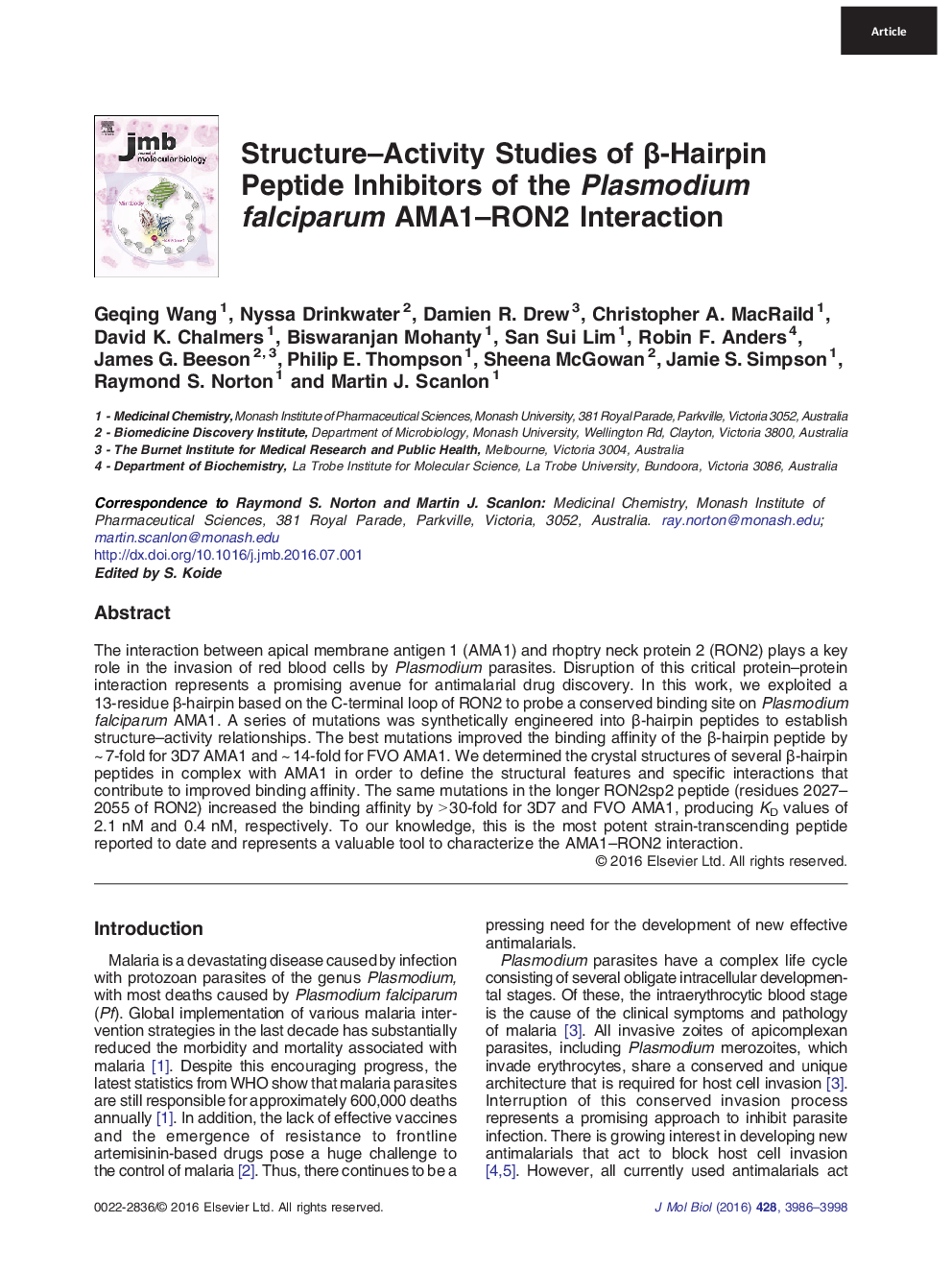| کد مقاله | کد نشریه | سال انتشار | مقاله انگلیسی | نسخه تمام متن |
|---|---|---|---|---|
| 5533377 | 1402121 | 2016 | 13 صفحه PDF | دانلود رایگان |

• Disruption of the AMA1–RON2 interaction in the invasion of red blood cells by malarial parasites represents a promising avenue for antimalarial drug discovery.
• A 13-residue β-hairpin based on the C-terminal loop of RON2 was used to probe a conserved binding site on AMA1 and facilitated the identification of two beneficial interactions.
• Crystal structures of several β-hairpin peptides in complex with AMA1 have been determined to define the structural features that contribute to improved binding affinity.
• Introduction of two beneficial mutations into the longer RON2sp2 peptide produced the most potent strain-transcending peptide inhibitor reported for AMA1 to date.
The interaction between apical membrane antigen 1 (AMA1) and rhoptry neck protein 2 (RON2) plays a key role in the invasion of red blood cells by Plasmodium parasites. Disruption of this critical protein–protein interaction represents a promising avenue for antimalarial drug discovery. In this work, we exploited a 13-residue β-hairpin based on the C-terminal loop of RON2 to probe a conserved binding site on Plasmodium falciparum AMA1. A series of mutations was synthetically engineered into β-hairpin peptides to establish structure–activity relationships. The best mutations improved the binding affinity of the β-hairpin peptide by ~ 7-fold for 3D7 AMA1 and ~ 14-fold for FVO AMA1. We determined the crystal structures of several β-hairpin peptides in complex with AMA1 in order to define the structural features and specific interactions that contribute to improved binding affinity. The same mutations in the longer RON2sp2 peptide (residues 2027–2055 of RON2) increased the binding affinity by > 30-fold for 3D7 and FVO AMA1, producing KD values of 2.1 nM and 0.4 nM, respectively. To our knowledge, this is the most potent strain-transcending peptide reported to date and represents a valuable tool to characterize the AMA1–RON2 interaction.
Graphical AbstractFigure optionsDownload high-quality image (172 K)Download as PowerPoint slide
Journal: Journal of Molecular Biology - Volume 428, Issue 20, 9 October 2016, Pages 3986–3998